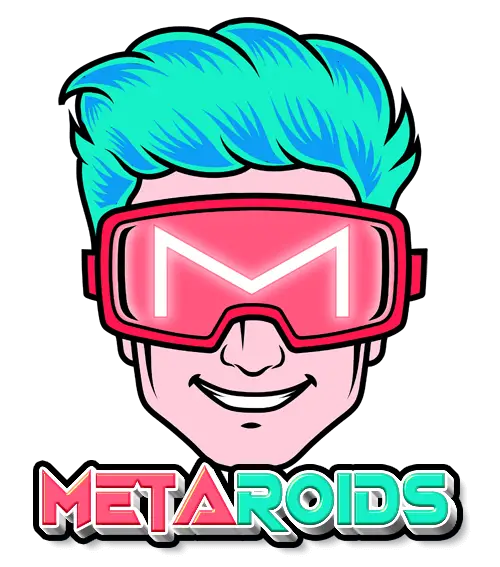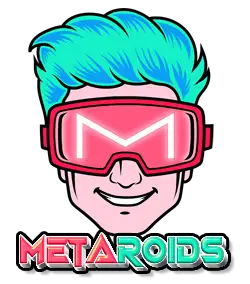Ethereum and Cardano are two of the heavyweights in the decentralized finance (DeFi) space; and although both networks don’t see eye to eye, bridging assets from one chain to another is crucial to make the most out of each market segment. When it comes to making passive income, which is what most of DeFi users are after, sticking to one blockchain isn’t the best way to go.
If you have extra liquidity on Ethereum, you could transfer some of that on Cardano. Likewise, the reverse is also true if you have more funds on the ADA chain.
This article aims to give you a step-by-step guide to bridging Ethereum to Cardano and vice versa using different platforms depending on your needs.
What is Bridging?
Bridging simply means transferring assets from one protocol to another. Since most crypto assets are designed to function on one chain only, bridges provide a way to easily migrate existing liquidity from one platform to another when necessary.
See our Ultimate Bridging Guide to learn more.
Before everything else, it’s important to explain why Cardano-Ethereum bridges, in particular, are quite complicated. The founder of Cardano, Charles Hoskinson, was also a co-founder of Ethereum a few years back. Sadly, Hoskinson had to leave due to irreconcilable differences with Ethereum’s de facto leader, Vitalik Buterin
It took a while before a bridge was made specifically between the two blockchains due to their differences, as well as the variations in design, framework, and approach, on both blockchains.
Where to Bridge Ethereum to Cardano?
While most of our examples involve bridging ETH to Cardano, the inverse is just as easily doable with the provided steps.
There are three possible ways to bridge crypto from Ethereum to Cardano:
- MicroChains: We’ll be exchanging $ETH on the Ethereum network for $CETH on the Cardano blockchain.
- Changelly: We’ll be purchasing $ADA directly on the Cardano network with $ETH from the Ethereum protocol.
- Centralized Exchanges: We’ll be sending $ETH to a centralized platform, exchanging it for $ADA, then withdrawing it in a Cardano wallet.
It’s important to note that Changelly is not fully decentralized since it still functions under an official company.
Bridging Tokens and Stablecoins
Bridges aren’t just for coins but also for tokens and stablecoins as well. The only prerequisite required for bridging crypto is to have cross-chain support or a wrapped version.
We’ll be showing you how to bridge other assets like $USDC or $USDT as well.
How to Bridge Ethereum to Cardano with MicroChains
MicroChains allows you to convert ETH to $CETH through wrapping.
Wrapping is when a crypto from one blockchain is exchanged for its counterpart in another blockchain. The value of both cryptocurrencies should be 1:1.
STEP 1: Go to MicroChains.
STEP 2: Set the Send field to ‘Ethereum’ and the Receive field to ‘Cardano.’
STEP 3: Make sure you are sending $ETH and receiving $CETH.
STEP 4: Enter the amount you want to send.
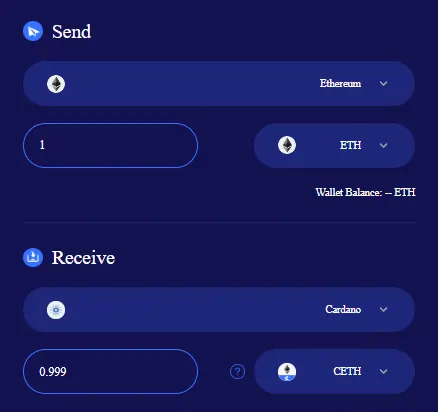
STEP 5: Connect your crypto wallet and enter the recipient address (Cardano wallet address).
If you don’t have a wallet address, you may choose between Yoroi or Nami wallets.
STEP 6: Transfer funds
It’s important to note that the cross-chain fee to receive $CETH on Cardano is 0.1% and the minimum cross-chain amount is 0.0015 $ETH, which could be extremely high for some (depending on the amount).
The platform also supports other stablecoins like USDT or USDC. Here’s how to send USDC from Ethereum to Cardano.
How to Bridge USDC from Ethereum to Cardano
STEP 2: Set the Send field to ‘Ethereum’ and the Receive field to ‘Cardano’.
STEP 3: Make sure you are sending $USDC and receiving $CUSDC.
STEP 4: Enter the amount you want to send
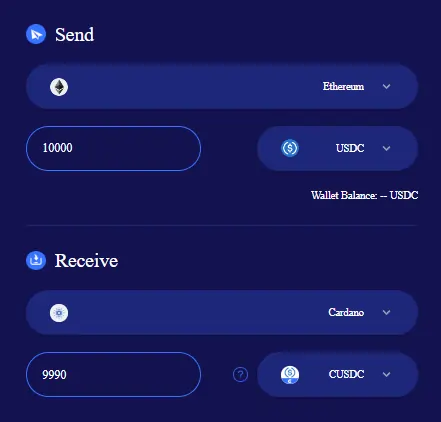
STEP 5: Connect your crypto wallet and enter the recipient address (Cardano wallet address)
STEP 6: Transfer funds
The platform still charges a cross-chain fee of 0.1% with a 30 $USDC minimum cross-chain amount. MicroChains’ minimum charge is 5 $USDC and to send 10,000 $USDC, you’ll have to pay 10 $USDC.
If you want to send $USDT, the same process applies. If you want to send in reverse (Cardano to Ethereum), all you have to do is change the Send and Receive variables but follow the same process.
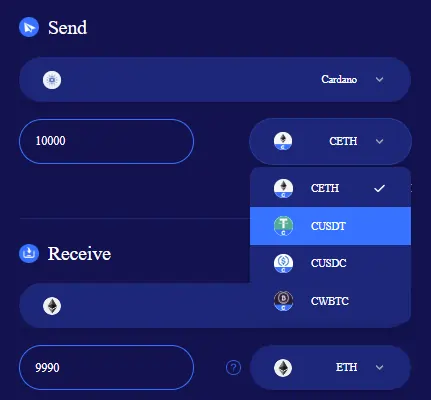
When to Use MicroChange for Bridging?
MicroChange is best used when you want to stay decentralized when transferring assets from one protocol to another.
Pros
- Decentralized
- Supports stablecoins
- Straightforward process
Cons
- Slower
- More expensive
How to Bridge Ethereum to Cardano with Changelly
Changelly is not a decentralized platform but it does provide the convenience of letting you buy $ADA with $ETH. This means that instead of transferring your assets, you’ll basically be purchasing crypto on the receiving blockchain.
STEP 1: Go to Changelly.
STEP 2: Choose between a Floating rate or Fixed rate.
A Floating rate gives you flexibility depending on price performance while a Fixed rate locks you in at a specific amount. For this tutorial, we’ll be using a Fixed rate.
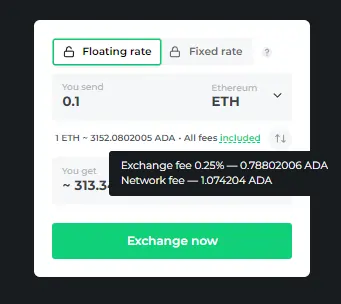
STEP 3: Double check the amount of $ETH you want to send and click on Exchange now
STEP 4: Enter an $ADA recipient address and a refund wallet address (just in case your transaction doesn’t push through)
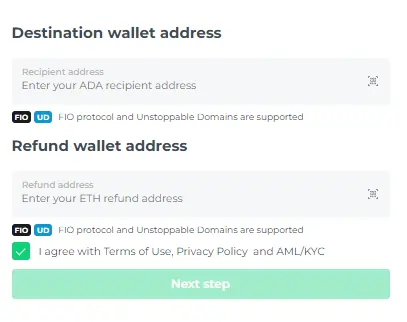
STEP 5: Click on the Next step and deposit your payment.
STEP 6: Wait for the funds to show up.
The same process applies if you want to use your $ADA to purchase $ETH.
When to Use Changelly to Bridge Ethereum to Cardano
Changelly is best used when you want the most convenient way to transfer assets from one protocol to another.
Pros
- More convenient
- You can choose what cryptocurrency to convert to
- Faster
Cons
- Don’t always have the best rates
- Not decentralized
How to Bridge Ethereum to Cardano with Centralized Exchanges
Although not recommended by a lot of crypto enthusiasts, centralized exchanges are still known for their fast transactions and low fees. Centralized exchanges are one of the easiest solutions to transferring Ethereum assets to Cardano.
For this process, we will be sending $ETH to a centralized exchange, swapping it for $ADA, then withdrawing it to a Cardano wallet.
STEP 1: Go to the exchange of your choice and open the “receive cryptocurrency” or similar options.
STEP 2: Change the settings to receive $ETH.
STEP 3: Copy the address and code.
STEP 4: Go to your crypto wallet.
STEP 5: Click on Send.
STEP 6: Enter the address you copied earlier (enter the code if needed).
STEP 7: Send your funds.
STEP 8: When the funds arrive in your account, exchange your $ETH for a stablecoin like $USDT or $USDC. For this article, we will be using $USDT
STEP 9: After making the exchange, trade your $USDT for $ADA.
STEP 10: Once you have your $ADA, go to your wallet and withdraw it.
STEP 11: Enter your Cardano wallet address.
STEP 12: Withdraw your $ADA from the centralized exchange to your wallet.
The same process can be done in reverse to send Cardano to Ethereum.
When to Use Centralized Exchanges to Bridge Ethereum to Cardano
Centralized exchanges are best used when you want a fast and cheap way to transfer assets but don’t care about decentralization.
Pros
- Cheap fees
- Faster sending times (depending on the blockchain)
Cons
- Not decentralized
- Centralized exchanges require KYC (personal information)
Join our newsletter as we build a community of AI and web3 pioneers.
The next 3-5 years is when new industry titans will emerge, and we want you to be one of them.
Benefits include:
- Receive updates on the most significant trends
- Receive crucial insights that will help you stay ahead in the tech world
- The chance to be part of our OG community, which will have exclusive membership perks
